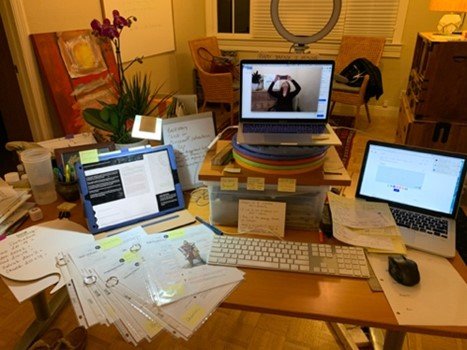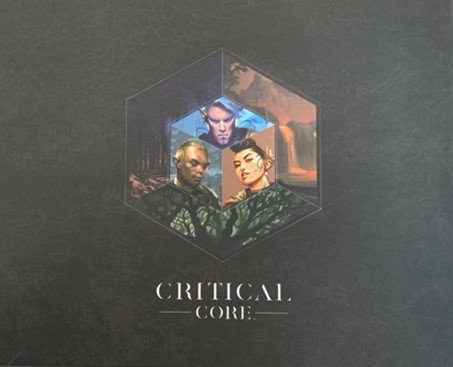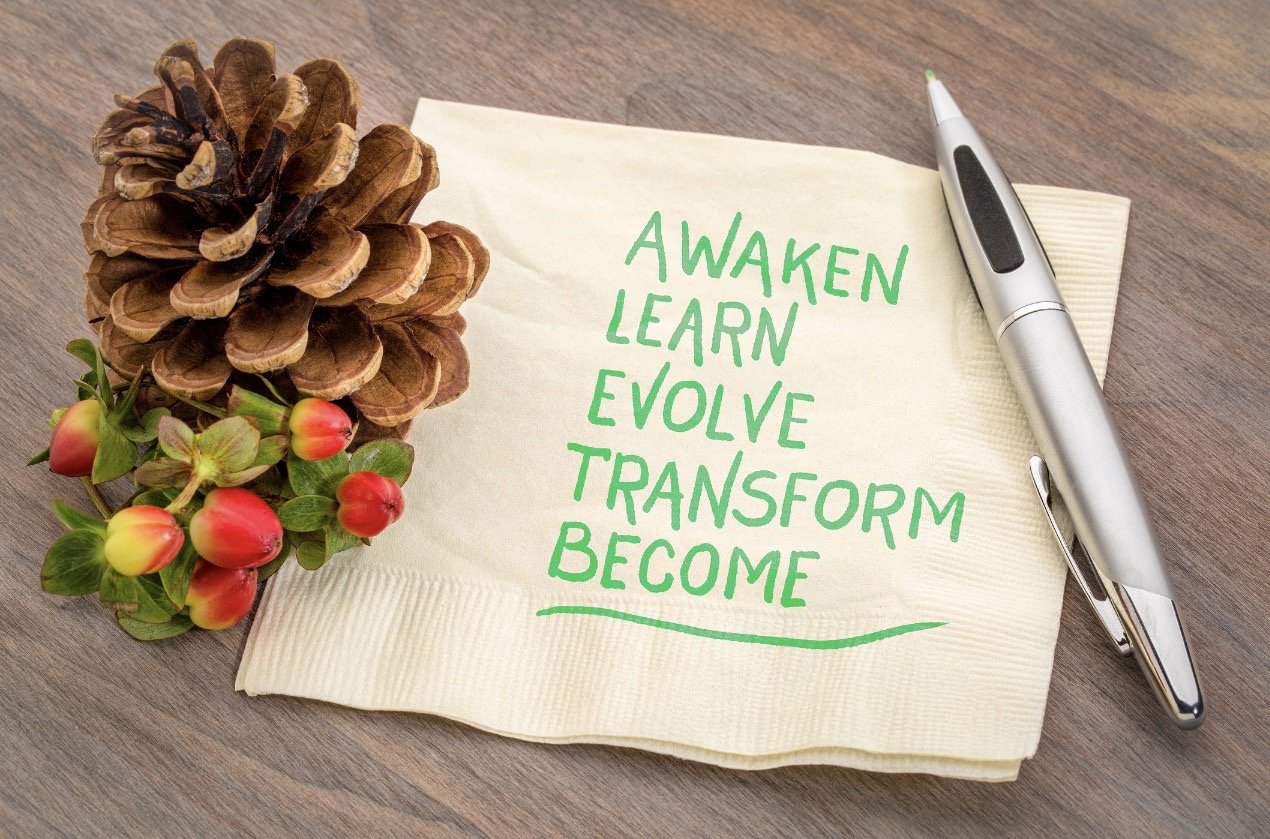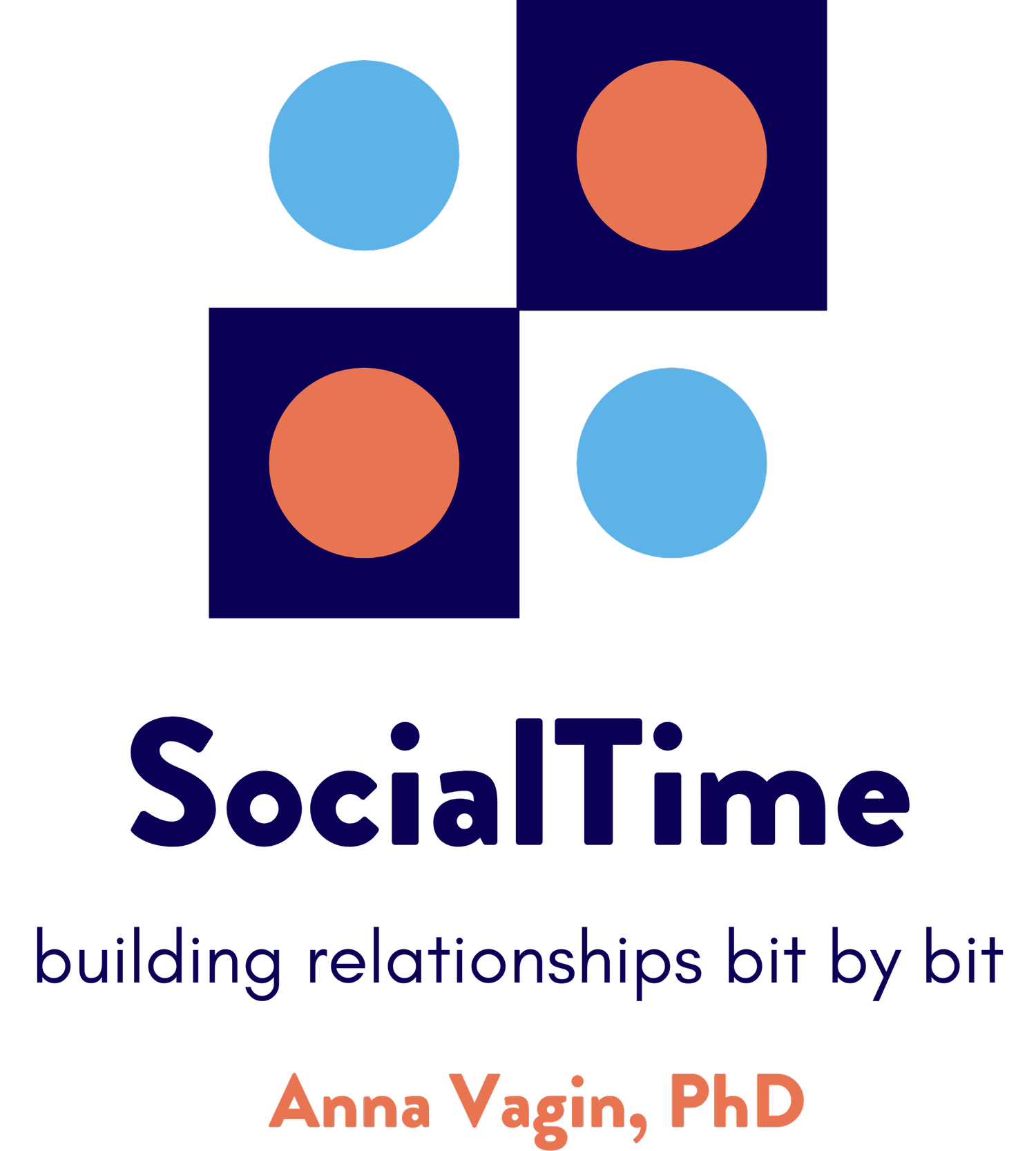
Blog

Moving along the continuums…
After 2 blogs talking about flex and stuck, this time, let’s consider how we can support our students in building their flexibility. Remember, both flexibility and inflexibility reflect continuums – not static points…

The Holidays = opportunities for flexibility…
With the coming end of the calendar year come HOLIDAYS. Once we are past that first signpost, Halloween, Thanksgiving (sometimes now with a week break!) seems to come overnight. Quickly followed by Winter break…

The Holidays = opportunities for stuck…
Ah, yes. Holidays - a time of differences. Different schedules, food, expectations, beds… Sometimes even disappointments and challenges…

So many great animations…
There’s nothing like plowing through therapy notes trying to determine whether a student or group has already watched a particular animated video. And what work was done with that specific video…

The joys of in-person therapy!
In some ways, these two photos encapsulate my practice during COVID/SIP. And I know which one I prefer! So wonderful to be able to explore Critical Core (CC) in-person with my students. I got lots of comments and questions after my recent blog on the game, so this time I want to tell you a story that reflects the power of therapeutic role-playing games.

Broaden your teaching with a therapeutic role-playing game!
Some of you may have heard me talk about Critical Core the therapeutically applied role-playing game created by Game to Grow. Constructed on a DIRFloortimeR framework, Critical Core (CC) builds 5 “core capacities;” regulation, collaboration, planning, perspective, and pretend play…

A lifetime of changing
I’ve worked with Tim, an autistic young man, since he was 3. Now he’s 22. A long relationship with him and his incredibly supportive family. When I became fascinated with mental state verbs (MSV) and talked with his mother, we agreed that they weren't words Tim used. Two years ago, we started a concerted effort to build his exposure to, understanding of, and use of MSV.

Making more room at the table…
In last month’s blog, I wrote about my plan to spend some of the summers revising CPPEV through the lens of neurodiversity and self-advocacy. Thanks to those of you who wrote supportive emails because it turned out to be a BIG job! But I am ever so happy to say that I am…finished.

It's All About the Content. . .
A summer of writing and revising CPPEV has kept me busy, but with some spare time for travel – I grew up in Monterey and so enjoyed spending some time in Pebble Beach and at the Carmel Bach Festival with my husband! Hope you're having a wonderful summer also!

Living Means Evolving...
In the 3 years since I developed the Conversation Paths and CPPEV, our field has seen lots of changes. We’ve been moving forward at a rapid pace, with new ideas becoming integrated into our clinical framework and becoming…well, not so new anymore. An indication of progress. Of where we are in this moment and where we hope to go in the future.

The Ways of Conversation...
Perhaps as you are reading this, you are resting and recuperating from a long stretch of hard work. Maybe you are in a new locale (or a favorite familiar one) shopping for and eating food that’s different from your usual, walking around in places that amaze you, having new experiences and adventures with those you love. Or maybe that’s next week or a dream for the future. In any case, for a minute, take a pause and consider….conversation.

Practicing Social via Building Activities
As the school year draws to a close, some of the students I see get a bit antsy. Yours too? A good time to bring out some new materials to battle that “what……X again?” refrain you may hear from your students. I also find that students seem more tired (ok, maybe me too,) whether from finals, little league gearing up, the heat, or being in cars trying to avoid construction traffic!

Integrate Great Games Into Your Sessions
May is a crazy month- there’s so much going on. Perhaps time to take a break with some relaxing retail therapy! It’s never too early to do some shopping in preparation for the new-but-for-now-seemingly-far-off school year. Just imagine how relaxed and pleased with yourself you’ll be when you start the year with new materials.

Pre-summer Activities with Mental State Verbs
Summer is approaching. Camps are being selected. Vacation plans are moving toward completion. New backyard fun is being purchased (and put together!) Sunscreen is being bought in large quantities. With all of this change on the way, it’s a wonderful time to think about and work with our students on some super important mental state verbs (MSV) – I haven’t talked about those for a few months! Verbs such as “hope,” “plan,” and “miss.”

Making the case for rubrics!
Last month, I talked about the importance of using strength-based frameworks as we explore student conversations. With the end of the school year in our sights, many of us are in the process of re-assessments, 3-year reviews, and IEPs. Ok, it actually is “IEP season” all year long, but let’s take a pause in our hectic days to think about…rubrics and goals. As Tony Robbins, author, business strategist and motivational speaker reminds us, “Setting goals is the first step in turning the invisible into the visible.”

Focusing on strengths in conversation gives us an important starting place.
As I write this, I’ve just returned from 4 days at the CSHA (California Speech Language & Hearing Association) conference. So great to meet in person! This year, I noticed several themes cropping up across presentations: the far-reaching effects of COVID and a continuing appreciation of strength-based assessment and treatment. In some ways, these two go hand-in-hand. After all, in times of stress and anxiety, don’t we all appreciate being seen as individuals with strengths that we share with others and draw upon when resilience is required?

Conversations – encounters that shape our lives.
Two people at a bus stop laughing over a movie they’ve both seen. A circle of friends sharing memories while gathered around a table sharing a special meal. Three students at recess negotiating those ever-changing rules of 4-square. So often, where we see people together, we hear or see conversation. It happens as we stand, sit, move, dance, or just lounge. It happens at all hours and in so many different places. As Martin Buber reminds us, “All actual life is encounter.”

Challenging our students in conversations – a good thing!
We, humans, are creatures of habit. Every morning I drag downstairs, turn on the espresso machine, return about 5 minutes later to make coffee, etc., etc., etc. So much of what I do – especially Mon-Fri is framed by recurring actions. It’s probably the same for you. In some ways these rituals are comforting, but they can also be boringly repetitive and sometimes pretty uninspired. Our patterns are sometimes obvious, other times less so. Some are acceptable, but others might do well to be challenged. Conversations are one aspect of our lives that often follow predictable, habitual patterns.

Comments: Moving Conversations Forward
I’m recently back from a wonderful 10 day (!) trip to Hawaii – more about that later… On my return, I found this question in my mailbox: “Students are really enjoying working with the Conversation Paths, but how can I support them in using more comments in their conversations – those seem to be the hardest for the students I work with.”

Dig into the complexities of relationships with Maca & Roni
Hopefully, we have all settled into 2022 – in both our personal and work lives. In my last blog, paired with my free resource of the Best of 2021 featuring Maca & Roni, I focused on various visual supports with those animations. Let’s stay with the Maca & Roni theme again, but this time focus on some of the interpersonal social and relationship experiences that give us great material.
